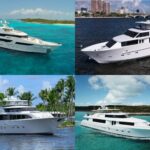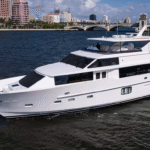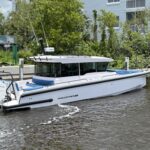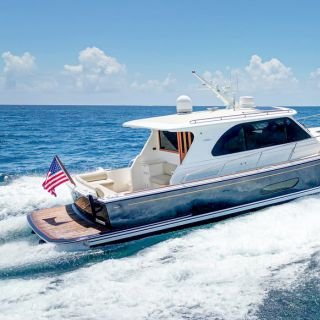
Understanding US EPA Regulations for SCR Exhaust Systems: What Recreational Yacht Owners Need to Know
Emission Standards and Compliance for Pleasure Yachts
Recreational yacht owners with larger engines need to be aware of US EPA Tier 4 emission standards, which are designed to drastically reduce nitrogen oxides (NOx) and particulate matter (PM) in marine diesel engines. These regulations require about an 80% reduction in NOx emissions, with a target of 1.8 g/kWh for NOx in Tier 4-compliant vessels. This means that newer yachts and those undergoing repower or engine replacement may be required to adopt technologies such as Selective Catalytic Reduction (SCR) to meet these stricter emissions standards.
Vessels Affected by Tier 4 Regulations
The EPA Tier 4 standards apply to recreational yachts with engines over 50 tons and are intended for those operating in US waters, including both the continental US and its surrounding areas such as the Caribbean and Gulf of Mexico. These regulations are particularly relevant for yachts that:
-
Have engine power exceeding 750 HP (typically yachts over 56 feet in length).
-
Operate in Emission Control Areas (ECAs), where stricter emissions controls are enforced (such as near ports or coastal regions).
-
Have undergone repowering or are replacing engines to comply with more stringent NOx and PM standards.
For recreational yachts, SCR systems help achieve the necessary reductions in emissions, and they are required for many vessels to comply with the latest standards set by the EPA Tier 4 regulations.
Certification and Compliance Requirements
To meet EPA standards, yacht manufacturers and engine repowerers must obtain an EPA Certificate of Conformity for each engine family. This process includes laboratory testing and in-use monitoring to demonstrate compliance with both cycle-average and Not-To-Exceed (NTE) emissions limits.
Yacht owners should also be aware of DEF (Diesel Exhaust Fluid) quality monitoring systems incorporated into SCR systems. These systems ensure the correct operation of the SCR technology and help prevent tampering or misuse, which could lead to non-compliance.
Technical Requirements for SCR Systems on Pleasure Yachts
The SCR system on recreational yachts must meet several key requirements to ensure it functions effectively. These include:
-
Precise urea dosing to reduce NOx emissions while avoiding ammonia slip.
-
Sensors for monitoring exhaust temperature, pressure, and DEF level to ensure optimal SCR operation.
-
Temperature regulation to protect the catalyst from excessive heat and maintain long-term durability.
-
Cold weather readiness to ensure SCR systems operate effectively in cold temperatures, including heated DEF tanks and lines.
These technical requirements help yacht owners ensure their vessels meet the Tier 4 emissions standards for the full life of the engine, without needing costly repairs or re-certifications.
Regulatory Resources and Guidance
EPA regulations governing SCR systems are found in 40 CFR Parts 1039 (for nonroad diesel engines, including yachts). The EPA also provides detailed guidance documents and compliance tools for manufacturers, repowerers, and operators of recreational yachts. It is important for yacht owners to work with EPA-certified service providers to ensure that any repowered engine or newly installed SCR system is fully compliant with EPA rules.
The EPA’s Tier 4 guidelines and the associated documentation can be referenced for specific details about emissions testing, certification processes, and the ongoing requirements for maintaining SCR systems.
Conclusion: Staying Compliant and Operating Efficiently
Recreational yacht owners should be proactive in understanding the EPA’s Tier 4 emissions standards and how SCR exhaust systems help meet those requirements. For yachts over 50 tons or with engines over 750 HP, complying with these regulations is not just a legal requirement—it also ensures the yacht operates more efficiently and with a lower environmental impact.
By adopting SCR technology, yacht owners can maintain performance, ensure compliance with US regulations, and contribute to the reduction of marine pollution. For more detailed guidance, yacht owners should refer to EPA’s official resources and consult with professionals experienced in marine engine repowering and SCR system installation.












